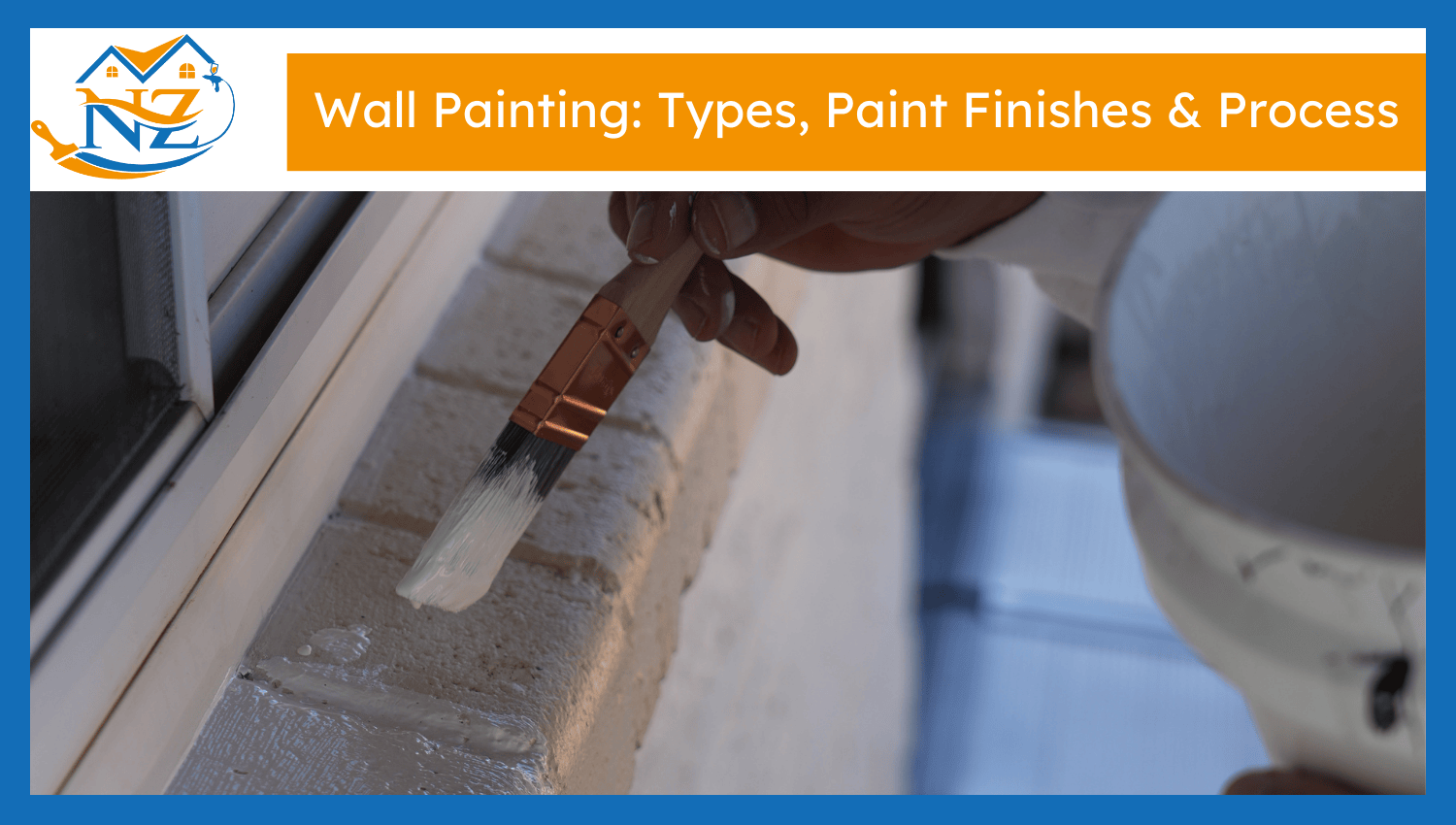

Wall painting enhances spaces by providing color options and design, along with protective measures. It serves to cover flaws while presenting rooms with a complete makeover. The various wall painting categories function separately to fulfill concrete requirements. The various wall finish types create different looks by providing matte, satin, gloss, and semi-gloss surface options. The different wall finishes match distinct environmental and mood requirements. The wall painting process consists of wall cleaning, followed by repair work, before applying paint primers to finish with coatings. Good preparations ensure long-lasting results. Wall painting provides an effective home or office transformation through simple methods that avoid extensive alterations. The overall transformation includes both functional aspects and beautiful design elements.
The following are the 4 main types of wall paintings:
Traditional wall painting consists of classic design elements, including patterns, motifs, and decorative designs. These wall designs represent unchanging elegance that maintains cultural value. Traditional decorative styles appear regularly in formal and heritage settings. The visual design uses both symmetrical arrangement and balanced color schemes. Traditional wall painting creates elegance while providing interiors with a refined, grounded look.
Abstract wall painting artists create artworks that focus on shape definitions, combined with color use and motion elements. This type of wall art lacks any predetermined format. Interior spaces benefit from these designs because they deliver modern energy that transforms the environment. Sharp brushwork combined with special texture patterns creates a dominating effect on the walls. Abstract wall painting functions well in creative areas by creating rooms that appear expressive, vibrant, and artistic.
Mural painting transforms complete walls into functional art pieces. Mural painting consists of definitions that range from landscapes to human figures, together with storytelling representations. The paintings reveal both individual experience and commercial business identities. The practice of putting murals takes place in residences, educational spaces, and official workplaces. Walls provide visual forts in a space that help to draw viewers and enrich it while keeping it fascinating for all residents.
Accent walls produce a unique design effect through different colors or painting styles applied to one single wall. The technique of contrasting wall color creates a noticeable visual impact in an area. The area receives emphasis through the use of bolder color shades and patterns. The installation of these features eliminates repetitive drabness while delivering extensive visual appeal to interiors. Small and large rooms can benefit from accent walls, including bedrooms, living rooms, and compact spaces.
Here are the 4 paint finishes used in wall painting:
Matte finish provides walls with a flat surface that reflects no light. The finish conceals the flaws on walls and creates a gentle soft appearance. Matte finish finds its ideal application when used on bedrooms and ceilings and areas with low traffic. The finish warms the space while it absorbs the surrounding light. Matte creates a soft and peaceful environment in interior rooms.
The reflective quality of the Eggshell finish creates a softly sheened surface. The surface holds stains less than a matte finish and provides easier cleaning opportunities. People normally use this finish in their living rooms and dining spaces. This finish maintains an equal sheen that falls between flat and shiny effects. Walls acquire a delicate luminosity by using an Eggshell finish.
The satin surface of satin finish provides a smooth appearance that features faint shine. Such paint is durable and makes it possible to clean surfaces repeatedly. The finish works well with areas including kitchens and bathrooms and long corridors. The medium light reflection of saturated finishes creates an elegant wall illumination. Rooms that experience daily usage and have moisture content benefit from a satin finish for its elegant appearance.
The reflective surface sheen of glossy paint is achieved through this texture. The material stands up well against moisture while maintaining easy maintenance capabilities. High-gloss paint works best for doors and trims, and cabinets instead of big wall surfaces. The finish shows all imperfections, thus requiring thorough surface preparation. Gloss creates brilliance and a smart, smooth finish on particular wall surfaces.
Below are the 4 main steps followed in wall painting:
The preparation process includes three steps, which include wall surface cleaning, followed by sanding, and restoration work. Dust and cracks get cleaned while old paint gets removed. The first step requires the use of a primer for achieving a uniform surface. A successful, lasting paint application is ensured through this preparation step. A solid preparation foundation allows smooth application results while delivering a clean, professional finish.
The selection process includes multiple dimensions: paint quality alongside its type, with its finish. Pay attention to three essential factors, including space purpose, lighting conditions, and wall state. Different applications need either water-based or oil-based paint solutions. Light paint shades enlarge spaces, and dark paint tones produce depth. Proper paint selection creates long-lasting results that work with decorative elements to produce an enhanced room atmosphere.
Paint professionals use brushing, rolling and spraying techniques to apply their work. Every technique allows for unique results when applied to surfacing. Rollers produce the best results on large flat surfaces. Brushes help users maintain directional control while performing edge-related tasks. The technique of spraying results in an outcome that is both consistent and uniform. Accurate techniques deliver both time efficiency and superior visual effects while producing consistent final results.
Paint completion requires drying and curing procedures after its application. The drying process removes excess surface moisture while curing steadily increases the layer’s strength as time passes. Weather and temperature conditions determine how quickly this process completes. Keep your hands off the walls, together with abstaining from wall washing until the appropriate time. The complete curing process results in durable paint with optimal smoothness that operates effectively under all room conditions.